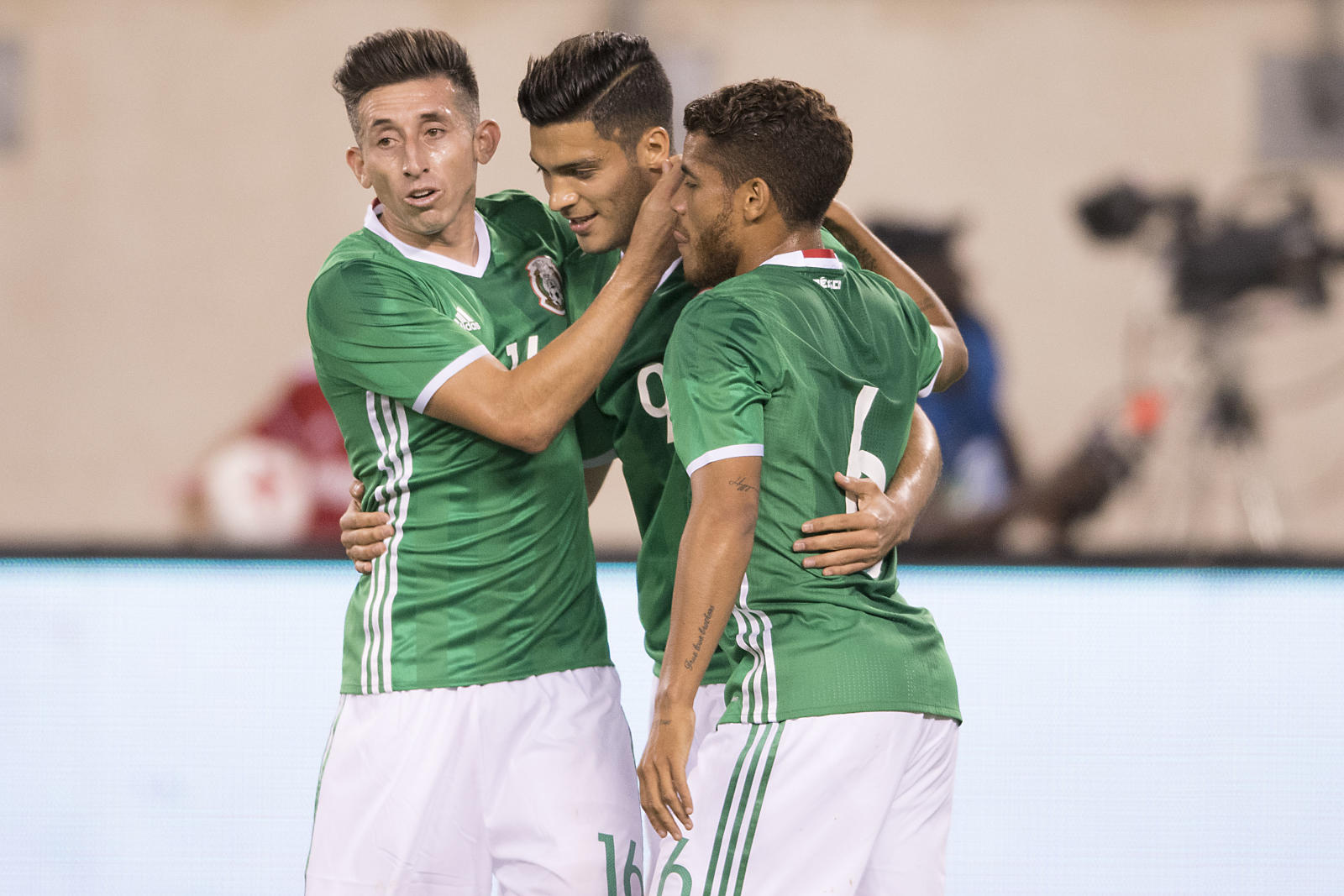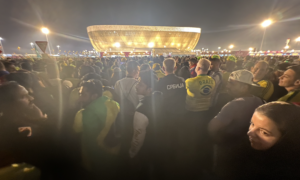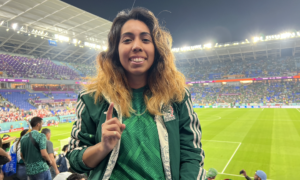With El Tri officially qualifying for the 2018 FIFA World Cup in September, its attention now turns to whatever chances it has of earning a “seed”, something that would Mexico’s chances significantly toward actually winning FIFA’s most prestigious trophy?
What is a “seeded team”? And why is there so much importance put on it?
A “seeded team” at the FIFA World Cup is simply the team that ends up in “Pot 1”. This pot includes the World Cup hosts, but also the best-ranked FIFA-associated national teams according to those rankings.
As Michel Richaud explained for Fut Mex Nation in the past, “seeded teams” get significant benefits based on how FIFA divides teams into “pots” for the groups. In the group stage, they have a much easier path to not only advancing to the knockout phase of the World Cup right now, in the current 32-team format. But there’s also a much greater chance that the team will advance to at least the quarterfinal and beyond. In the 2014 World Cup, Costa Rica and Chile were the only unseeded teams to win their group. And there’s a much stronger association between winning your group in the World Cup and advancing to the quinto partido.
In 2022 and beyond, the consequences of being a seed could be even more magnified as the seeds may be the only teams who are guaranteed to play more than one game–a preliminary elimination game–at FIFA’s biggest tournament. But that’s a story for another day.
The way the seeds work is very different from the youth World Cups (anything with “Sub-” or “U-” in the name), even though the number of seeds and teams in each tournament are the same. Besides the hosts, at the youth World Cups, the champions of each confederation’s qualifying tournament also are assigned a seed.
However, because of how World Cup places are given at the senior level (both men’s and women’s), the procedure of determining seeds necessitates the difference.
So how do FIFA rankings work?
The rankings are really a linear combination of the team’s point-scoring record over the last four years, with the points from each match transformed by several weights. This document gives a much fuller explanation of how they work. The sum of the “weighted game points” is multiplied by a global weight based on how long ago the matches played. That weight is strongest for the matches played within the last 12 months, while continuing to depreciate for each previous year considered.
Points are given as they are for matches (3 points for a win, 1 point for a draw, 0 points for a loss). But each match is assigned a weight based on the nature of the match (World Cup, continental final or Confederations Cup, World Cup or continental tournament qualifier, or friendly/minor tournament), the quality of the opponent in the FIFA ranking, and a confederation-based weight based on further history of each confederations in international tournaments.
A team could earn as little as 0 rankings points for losing a match of any kind to as many as 2400 rankings points for defeating the #1 ranked team in the World Cup at any point in the World Cup. Friendly matches can earn at most 600 points, while continental finals can see teams up to 1,800 points from a single match.
And so, to improve their rankings, national teams would be wise to pitch for most of their fixtures to be continental and World Cup qualifiers, as well as finals, especially against opponents who are themselves higher in the rankings.
There are two problems with this thought. First, while the procedures for qualification for continental tournaments vary significantly by confederation, whether the teams can schedule many significant games against higher-ranked opponents is highly dependent on the number of places the confederation is allocated relative to the number of teams in the confederation. For the 2018 and 2022 World Cups, <10% of the teams from CONCACAF (3.5 teams out of 35 teams), AFC (4.5 out of 47 teams), and CAF (5 out of 55 members) will qualify. And there are few ways to schedule meaningful qualifiers for the entirety of the calendar without having elimination games early on. The early knockout games mean that the top national teams are not in higher-weighted FIFA matches. For those other national teams who have to take part in early knockout qualifying, elimination from World Cup qualification early in the cycle keeps the ceiling at which they can improve their rankings relatively low. And because more than 20% of the teams in CONMEBOL and UEFA qualify for World Cup places, every team in those confederations is involved in every qualification match up until the November playoff matches.
Secondly, the rankings only take into account whether the result is a win, draw, or loss. A win by “the only goal of the game” counts the same in the rankings as a 7-0 win. And so, teams can move up quickly in the rankings without necessarily producing a better pool of players with collective defensive strategies that frustrate the best opponents and getting goals at the right time, and doing it over and over again against teams ranked higher than them in the rankings. It is not a strategy that is necessarily based on building up the quality of the most players possible, and rewarding genuine competition between clubs and the incubation of a stronger futbol culture.
Thankfully, most nations are not that lucky. If they get lucky based on the circumstances, like the United States in 2002, the limits of their willingness to incubate a deeper, more resonant futbol culture that builds better players, coaches, and local subcultures through competition will come around before the rankings period ends.
What does all this mean for El Tri at the 2018 World Cup?
In short, with the European and South American teams around El Tri in the FIFA rankings still having meaningful matches, El Tri likely won’t be a seeded team at the 2018 FIFA World Cup. Too much has to go right involving too many teams. And El Tri wasted its best opportunity to move up in the rankings when it played Costa Rica to a 1-1 draw in the September window.
But at the 2018 World Cup, not everything is lost. The 2018 FIFA World Cup is the first World Cup where FIFA ranking, and not geography, is used to determine the teams in the other three World Cup pots. El Tri would likely finish as a Pot 2 team. And so, El Tri would face two teams whom they are expected to beat.
By facing two teams lower than El Tri in the October FIFA rankings, the FIFA organizers ensured that El Tri is not as likely to see a “group of death” than it was in 2006, 2010, or 2014. And that makes advancement from its group an obligation for Juan Carlos Osorio’s selection in 2018.
While we do not know the exact draw and the nature of the draw will affect who Mexico would expect to face in the Round of 16, El Tri has a better chance of getting to a quinto partido than it did in recent World Cups past.
And to secure that better position, El Tri must take care of the business they can control and win their matches against Honduras and Trinidad and Tobago.
What about the SUM friendlies? Should El Tri stop scheduling friendlies in the United States?
There are plenty of people in Mexico who are not happy about El Tri renewing its contract with SUM (Soccer United Marketing, the marketing company headed by MLS commissioner Don Garber) to play many of its friendlies in the United States. The arguments people have against playing friendlies in the United States include the notion that fans in the United States are less critical of El Tri‘s play in the friendlies and will cheer on the team, regardless of display, and that they aren’t facing a more critical press.
But there’s a bigger fear that could be present as a result of SUM’s contract with El Tri (or something that may arise from networks’ and owners’ negotiations for El Tri‘s media rights and influence. It’s that SUM, and others, could be dictating to whomever the manager of El Tri, that he use certain players from certain teams. This was a criticism that surfaced when Brazil suffered its 7-1 defeat to Germany in 2014, that promoters and agents were selecting the lineups and teams instead of the manager. And it was a criticism that Johan Cruyff documented of the United States Soccer Federation (USSF) in his autobiography My Turn, when he noted that Soccer United Marketing forced Jurgen Klinsmann to use certain players from each MLS franchise, regardless of whether he thought anything of the players.
And that criticism came up in Mexico’s October call-up, when the Dos Santos brothers, who both play for MLS franchise LA Galaxy, instead of taking along Excel Mouscron striker Omar Govea, or in-form Pachuca midfielder Victor Guzman, who have been more effective as of late in competitions with more at stake than anything that would be played in MLS.
But at the same time, unless CONCACAF makes dramatic changes to either its World Cup qualifying format or its Gold Cup qualification format, Mexico is likely shut out of playing qualifiers until the second year in the cycle. The friendly games, from a rankings purpose, are better than no friendlies because points are still available. That holds as long as they do not play an opponent too far down the FIFA rankings.
From a financial perspective, the FMF’s best chance of making enough revenue to justify playing friendlies outside of Mexico (besides competition) comes from playing in the United States. El Tri, by world standards, is still a ‘nobody’, and can’t simply travel to the likes of Australia, Malaysia, India, China, Middle East, Africa, or Europe and sell out stadia in the way the national teams of Brazil, Argentina, and Uruguay can.
However, it is not clear that the FMF would continue with SUM after the 2018 FIFA World Cup, if it is considering criticisms from home. The federation had been considering several TV bids to show the national team on television, including a multinational bid from NBC Universal and America Movil that might have seen the first-ever “world feed” stream for El Tri in addition to the traditional rights to El Tri in both Mexico and the United States. (A “world feed” is the version of a live event that appears in a country without any local post-production or announcers.)
While that battle for El Tri TV rights went to Televisa and Azetca, due to “automatic renewal” rules in the previous contract, the rights for the national team in the United States and worldwide are still up in the air. And consequently, in that decision, FMF may be considering whether or not SUM stays on as a promoter.
Should SUM’s contract with El Tri end, the question of playing friendlies in the United States might not be over. But there may be a better chance that Mexico would play fewer friendlies in the land of its northern neighbors.
But in the grand scheme of the FIFA rankings, a change in the business relationship FMF has had with SUM may not mean anything other than a change of location for the friendlies.
Comments








